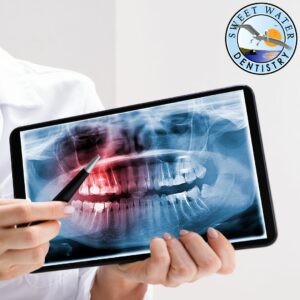What Are the Signs of an Infected Tooth? A Complete Guide to Symptoms and Treatment
A tooth infection, also known as a dental abscess, is a painful condition that can lead to serious health complications if left untreated. The infection typically occurs when bacteria invade the inner layers of a tooth due to decay, injury, or gum disease. If you suspect you have an infected tooth, recognizing the warning signs early can help prevent further damage and discomfort. In this article, we’ll explore the most common symptoms of a tooth infection, potential causes, and available treatment options.
Common Signs of an Infected Tooth
1. Persistent and Severe Toothache
One of the most telling signs of an infected tooth is a continuous, throbbing pain. The pain may start off as mild discomfort but can intensify over time. It often radiates to the jaw, ear, or neck, making it difficult to pinpoint the exact source.
2. Swelling of the Face or Gums
If your tooth is infected, you may notice visible swelling in your face, jaw, or gums. This occurs due to pus buildup around the infection site, which causes inflammation. In severe cases, the swelling can spread and lead to difficulty opening your mouth or swallowing.
3. Sensitivity to Hot and Cold
An infected tooth often becomes extremely sensitive to temperature changes. If you experience sharp pain when drinking hot coffee or eating ice cream, it could be a sign that the infection has reached the inner pulp of the tooth.
4. Bad Breath or Foul Taste in the Mouth
Bacteria buildup and pus drainage from an infected tooth can produce a persistent bad taste or odor in your mouth. If you notice an unusual, foul smell that doesn’t go away despite brushing and rinsing, a tooth infection might be the culprit.
5. Fever and General Malaise
As with other infections in the body, a tooth infection can trigger fever, chills, and an overall feeling of illness. This is a sign that the infection is spreading, and immediate medical attention is necessary.
6. Swollen or Tender Lymph Nodes
The lymph nodes under your jaw or in your neck may become swollen and tender when your body is fighting an infection. This is a red flag indicating that the infection is spreading beyond the affected tooth.
7. Difficulty Chewing or Biting
Pain while biting or chewing can be a sign of an abscessed tooth. If the pressure of biting down causes intense pain, the infection may be affecting the nerves and tissues surrounding the tooth.
8. Gum Abscess or Pimple on the Gums
A small, pus-filled bump on your gums near the affected tooth is a key indicator of an abscess. This bump may ooze pus, relieving some pain temporarily, but it does not mean the infection has gone away.
Causes of Tooth Infections
Tooth infections usually stem from bacterial infiltration into the tooth’s inner structures. Some common causes include:
- Untreated cavities – Bacteria erode the enamel and reach the inner pulp.
- Cracked or chipped teeth – These provide an entry point for bacteria.
- Gum disease – Periodontal infections can spread to the roots of the teeth.
- Previous dental work – Poorly performed root canals or fillings can allow bacteria to enter the tooth.
Potential Complications of an Untreated Tooth Infection
Ignoring the signs of a tooth infection can lead to severe health risks, including:
- Tooth loss – If the infection spreads, the affected tooth may need extraction.
- Bone loss – The jawbone can deteriorate if the infection is not treated.
- Spread of infection – The infection can enter the bloodstream (a condition known as sepsis) and affect other parts of the body.
- Ludwig’s Angina – A life-threatening bacterial infection that spreads to the neck and chest.
Treatment Options for an Infected Tooth
If you suspect a tooth infection, seeing a dentist as soon as possible is crucial. Here are the common treatment options:
1. Antibiotics
If the infection is spreading or severe, your dentist may prescribe antibiotics to help control the bacterial growth. However, antibiotics alone won’t eliminate the infection completely if the source remains untreated.
2. Drainage of the Abscess
Your dentist may make a small incision to drain the pus and alleviate pressure. This can provide temporary relief but is often followed by further treatment.
3. Root Canal Treatment
A root canal is often the best option to save an infected tooth. The procedure involves removing the infected pulp, cleaning the root canals, and sealing the tooth to prevent further infection.
4. Tooth Extraction
If the tooth is severely damaged and cannot be saved, extraction may be necessary to prevent the infection from spreading to other teeth.
5. Pain Management and Home Care
While waiting for professional treatment, you can manage pain and swelling with:
- Over-the-counter pain relievers (such as ibuprofen)
- Warm saltwater rinses
- Applying a cold compress to the affected area
- Avoiding extremely hot or cold foods
When to See a Dentist Immediately
Seek emergency dental care if you experience:
- Difficulty breathing or swallowing
- Swelling that spreads to your eyes, neck, or face
- High fever with chills
- Persistent, unbearable tooth pain
Final Thoughts
A tooth infection is not something to ignore. If you notice any of the warning signs mentioned above, consult your dentist as soon as possible to prevent complications. Early intervention can save your tooth and protect your overall health. Practicing good oral hygiene and attending regular dental checkups can also help prevent infections from occurring in the first place.
If you suspect you have an infected tooth, don’t wait—schedule an appointment with us dentist today!
Visit us for expert care:
Sweet Water Dentistry
📍 5915 Sweetwater Cir, Fairhope, AL 36532
🌐 sweetwatersmile.com
📞 Call or Text: (251) 210-2773
Follow us on Facebook and Instagram for the latest updates and special offers!

